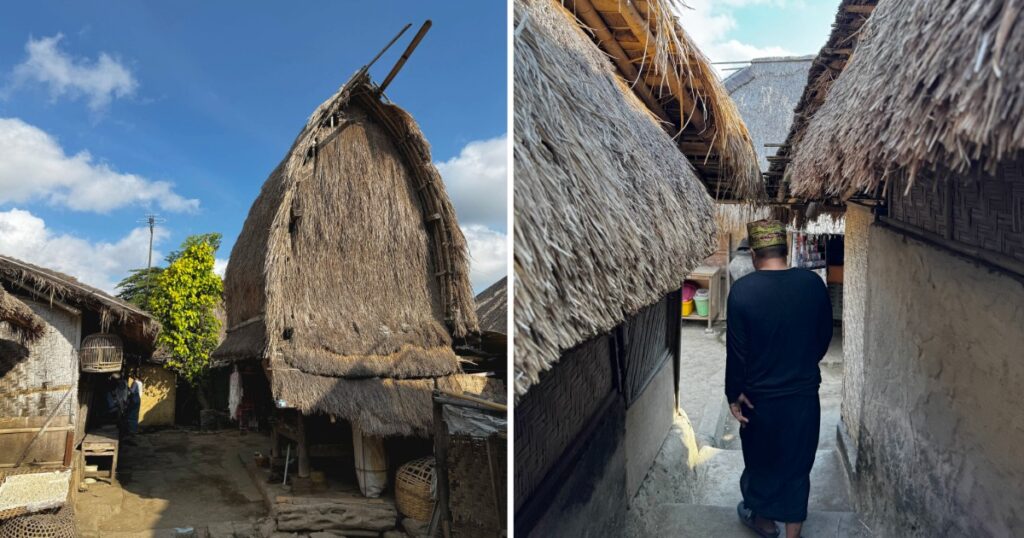Ever wonder what life looked like in Lombok before the waves of tourism rolled in? A visit to Sade village is the best way to find out. Halfway between Kuta and the Lombok airport, this centuries-old Sasak community is still fully lived-in. Residents have maintained unique traditions, thatch-roofed homes, and their local language — and you can go learn all about it IRL. Here’s more about my experience and why I think you should visit, too.
This post may contain affiliate links. Bookings or purchases through these links generate a small commission for me at no extra cost to you. Thanks for your support!
Arriving at the Sade village
Pronounced sah-day, a visit to the Sade village is an escape from bustling Kuta, and a world away from the chaos of Bali. Once you park and dart across the busy street, dodging lanes full of cars, scooters, and the occasional animal, there’s a notable peacefulness within the village walls.
We didn’t know anything about it before we got there. It was only on the itinerary after we saw it on Google Maps and thought, why not? It was just a quick 15-minute drive from central Kuta.
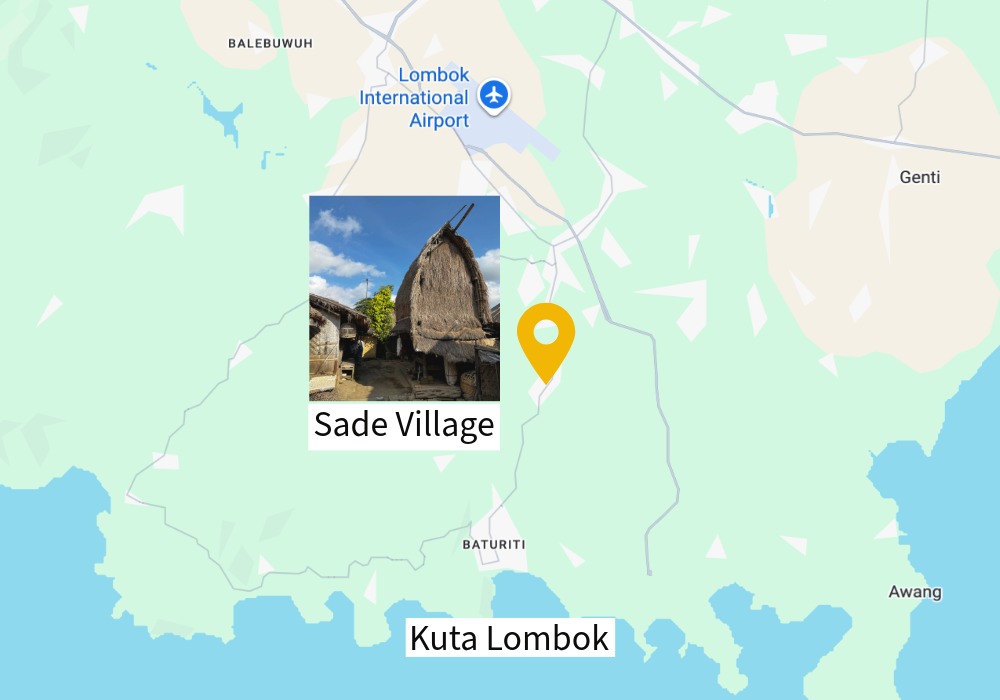
There isn’t a fixed entry fee. Instead, you’re sort of directed over to a table to make a cash donation. We had no idea what to donate, so we scanned the visitor book. Based on what other people had donated, we put in 50,000 IDR for the two of us.
Before we’d even had a chance to make the donation, a group of men were waiting at the entrance, all asking if we need a guide. Technically, you don’t need one. But in this case, where the whole point of the visit is to learn about local life, a guide makes so much sense.
The first guy who spoke to us, Ambar, was very chill and not pushy. He pitched giving us a 3-minute intro to the Sade village for free, then if we wanted, we could hire him as a guide. We asked how much a few times in different ways and couldn’t really get an answer. “As much as you want.” We just wanted a ball park — some number, any number!
He gave us the 3-minute run down, and everything he said was so fascinating we were hooked. Finally, he told us the average was about 75,000 IDR (8 NZD, 4 EUR) per person, but we could decide after the tour. Very reasonable, let’s go.
About the Sade village
A few fun facts we learned about the village:
- Sade is home to the Sasak people. These are Lombok’s first inhabitants who came from Java about 1,500 years ago, depending on who you ask.
- The Sade village still houses around 300 residents. According to Ambar, no one has ever chosen to move away. Tbh, I can’t imagine that’s strictly true over 1,500 years. But it does give you a sense of how deeply the locals are tied to their heritage.
- The community isn’t that religious. But the Indonesian government makes you declare a religion on their driver’s licenses, so they put down Muslim. Lombok is predominantly Muslim and we could hear the call to prayer from a nearby mosque as we explored the village.
The houses
Families live in thatch-roofed homes made of clay and bamboo. They had some pretty high steps leading up to the second story of the house, and apparently his grandma still sleeps upstairs!
They spread buffalo dung on the floor of the home every few days because it’s seen as sacred, and doubles as inspect repellent. Ambar showed us inside his home, and we were asked to remove our shoes. The buffalo dung had dried by that point.
The homes have regular electricity. Ambar explained that someone from Phillips visited the Sade village about 10 years ago and was like, “Hey, do you guys want some lights?” then set them up with a whole system. They also recently got one television for the village.
The roofs of the homes are quite sturdy but need to be swapped out every six or so years to avoid leaks. They’d built a watch tower during COVID to make sure no one tried to enter the village, and now it just makes for a nice viewpoint. There was someone working on one roof when we were there, which was pretty interesting to see.
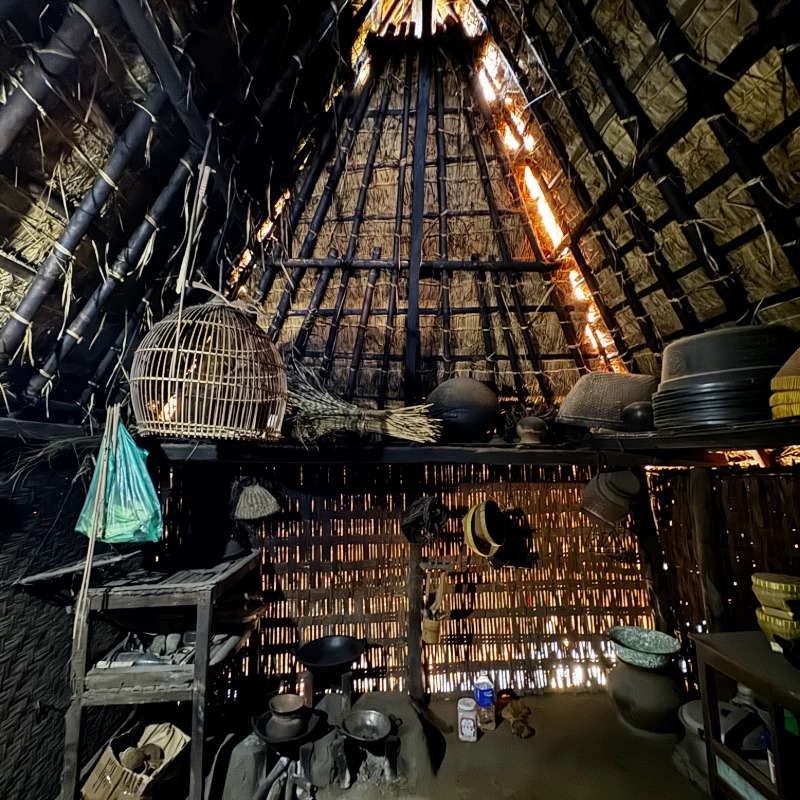
Kitchen
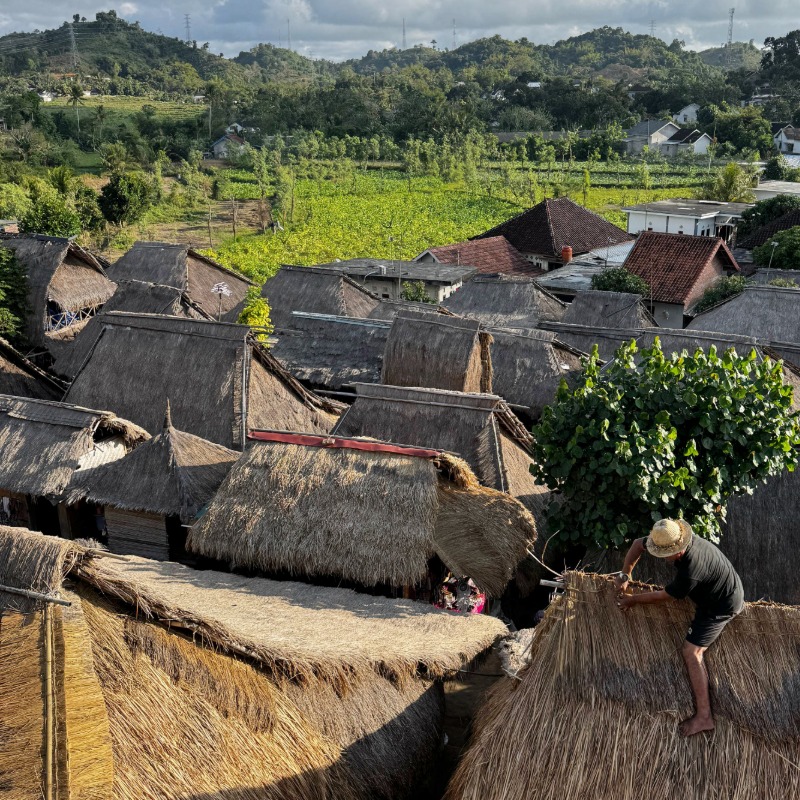
Repairing the roof
Traditions
Families make a living primarily by farming tobacco, rice, and other things, and dyeing and weaving their own textiles. Or, of course, giving tours like our pal here.
We watched women spinning and dyeing their own cotton thread with natural pigments like turmeric and beetroot. Then, this part was a little gimmicky but I loved it, Ambar let me weave a couple lines. I still have absolutely no idea how this system works, but it’s very cool. Chesney sort of asked if he could also give it a try, but this is a skill reserved for women only.
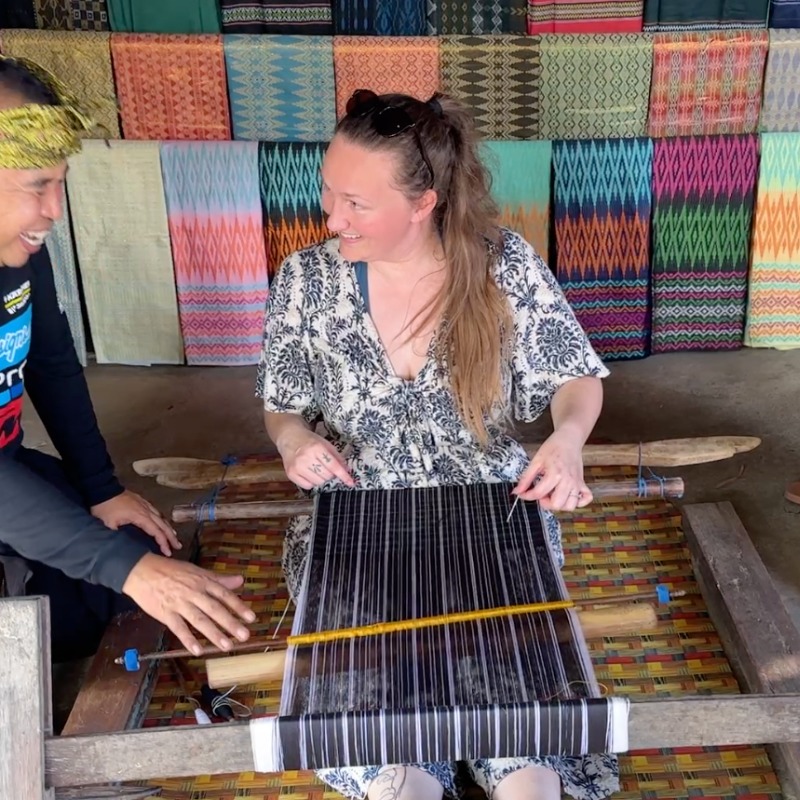
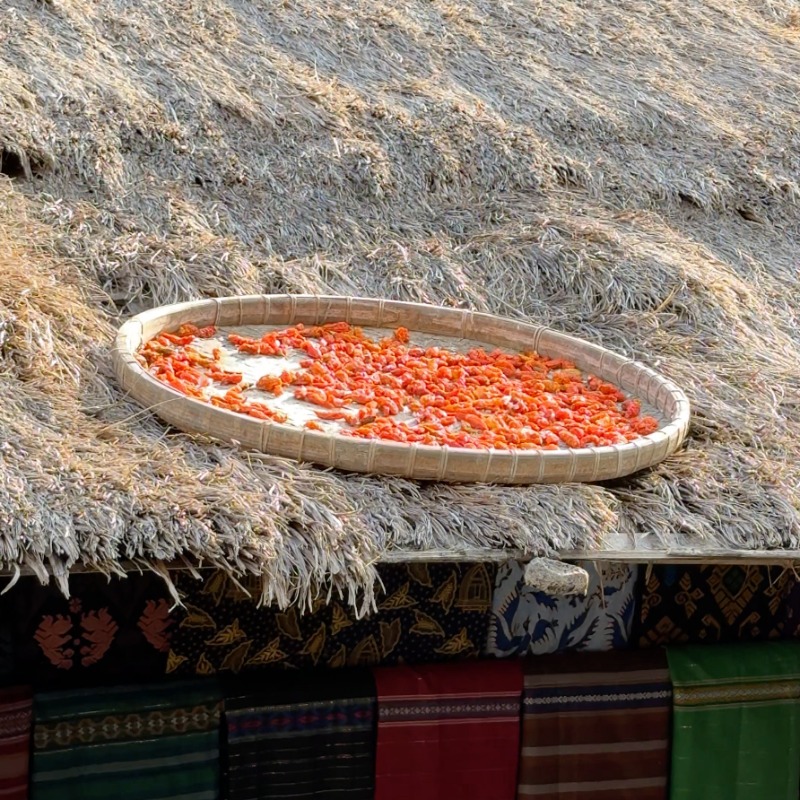
They want to keep the culture and traditions in the family, so everyone has to marry a cousin. But don’t worry, you get to pick the cousin. He emphasized that it’s not an arranged marriage.
However, the tradition is for a male cousin to “kidnap” his female cousin when he wants to marry her. They run off into the wilderness for three days, and then, if she’s keen (and Ambar really emphasized the consent aspect of this), they get married. I get the vibe the consenting part wasn’t always part of the process, but I’m happy to hear that’s how it works now.
In fact, if the male cousin kidnaps his cousin and she comes back and is like no, I don’t want to get married, he gets a fine. So a pretty good way to deter unnecessary kidnappings, if you ask me. You’d want to be pretttttty sure she’s going to say yes.
I’m sure lots of tourists reacted like we did — what I’d call respectfully shocked — and I could see Ambar took some pleasure in the shock value lol.
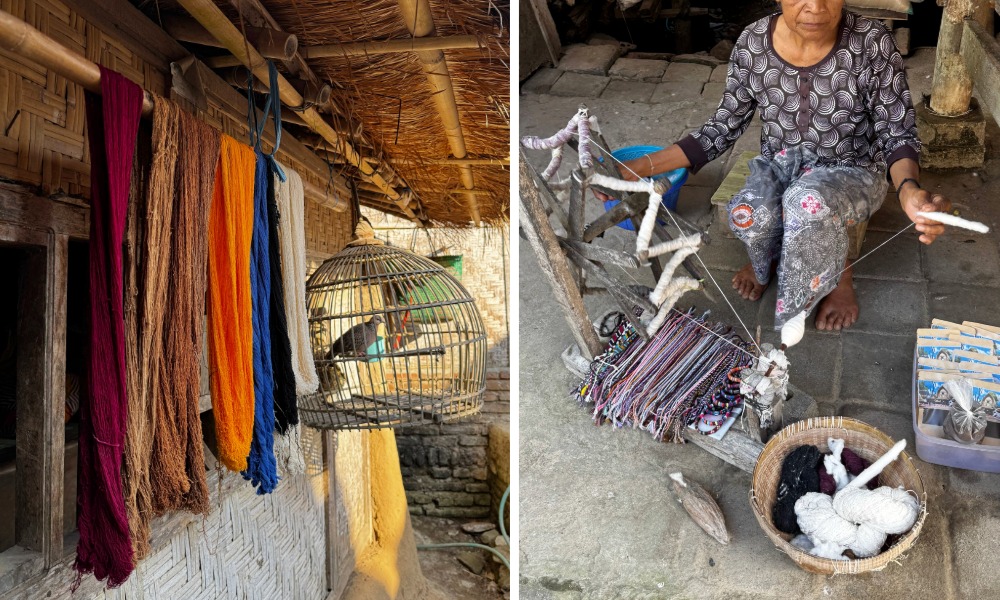
Takeaways after visiting the Sade village
One of the things I loved most about Sade was that we got to engage quite a lot. As I mentioned, I was invited to try weaving, Ambar gave us some strong local coffee to sip, and Chesney — who is not a smoker — even samples a hand-rolled cigarette made from their pure local tobacco. When in Rome, ya know?
We also couldn’t resist picking up a piece of artwork. Someone was making batik fabric paintings. Unique, stunning, and packed down to a small cube that was easy to transport home. A no-brainer — art is my go-to souvenir no matter where I go.
There was definitely a lot of stuff for sale, and Ambar was very straight up with us, explaining that about 90% of it isn’t made in the village. But he pointed out the authentic textiles and we saw the batik paintings being made. (And smelled, actually. The hot wax smell is… strong to say the least.)
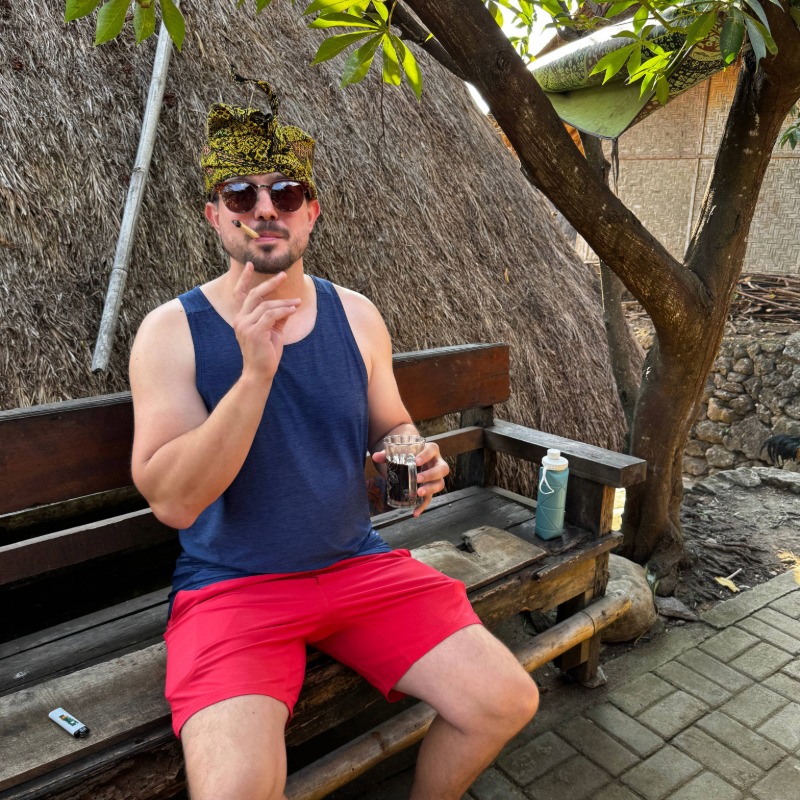
Chesney after two days in Lombok
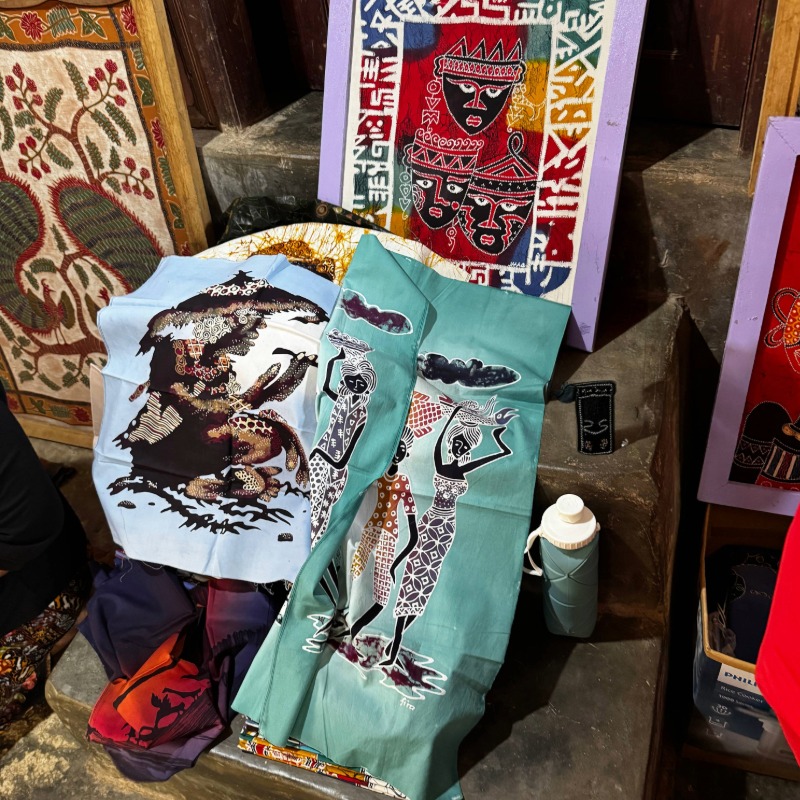
Choosing a batik painting
We had such a good time that we tipped our guide 150,000 IDR each. But if you’re on a budget, I’m sure the 75,000 is fine. I’m sure you’d get a great tour going with any of the locals, but if you’re there and you want the best — ask for Ambar! Otherwise, talk to a couple guys and find one you get a good vibe from.
I really don’t think it’s worth going without a guide. We got to go further into the village, enter a home, and got soooo much more context for everything. If you went on your own, you’d spend 15 minutes looking around and see some of the stuff for sale and quickly write it off.
Visiting the Sade village felt different from the usual tourist stops. And it’s a refreshing break from the very busy area of Kuta. Yes, there are parts of the village that are set up for visitors, but people still live here as they always have.
If you’re visiting Lombok, set aside an hour or two for the Sade village. It’s close enough to Kuta or the airport that you won’t need to plan your whole day around it, but the insight you’ll gain into Sasak culture is invaluable.
Before your trip, don't forget
Get an eSIM for Indonesia before you arrive! Saily is my favourite budget-friendly option.
They also have regional packages if you’re backpacking around Southeast Asia, or global plans and a monthly subscription option if you’re on a big world tour.


